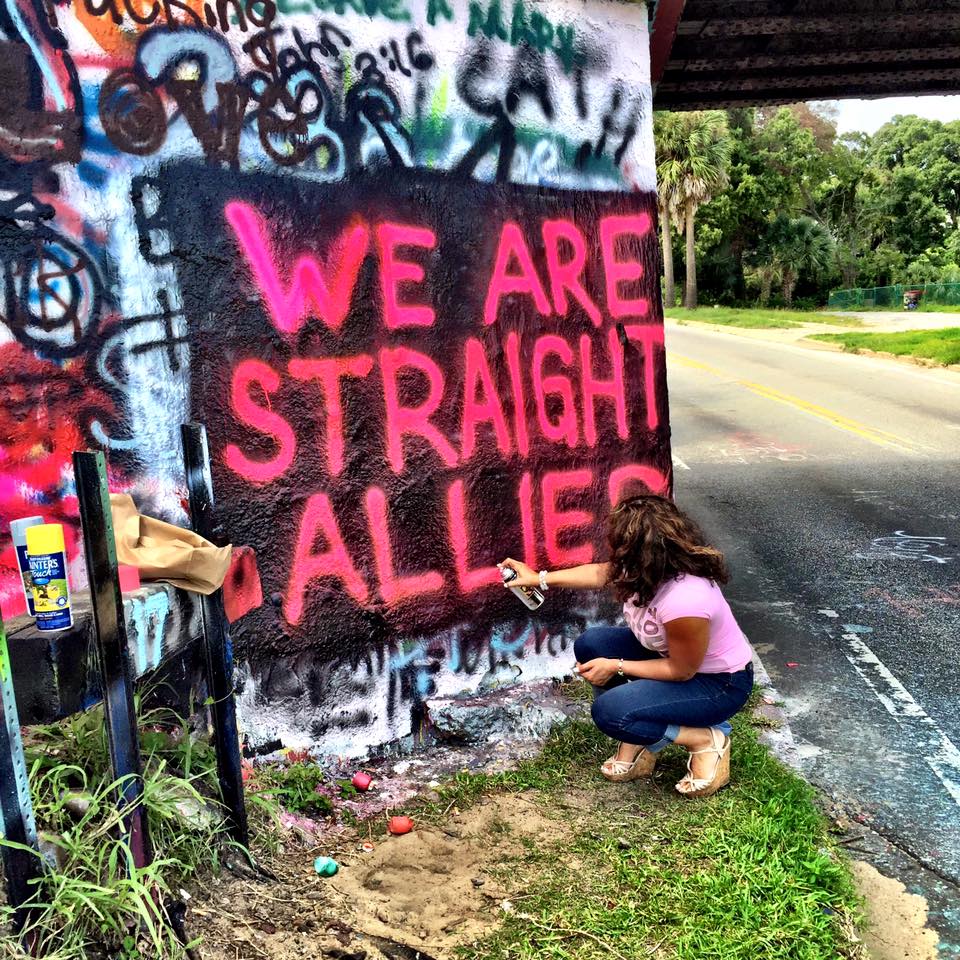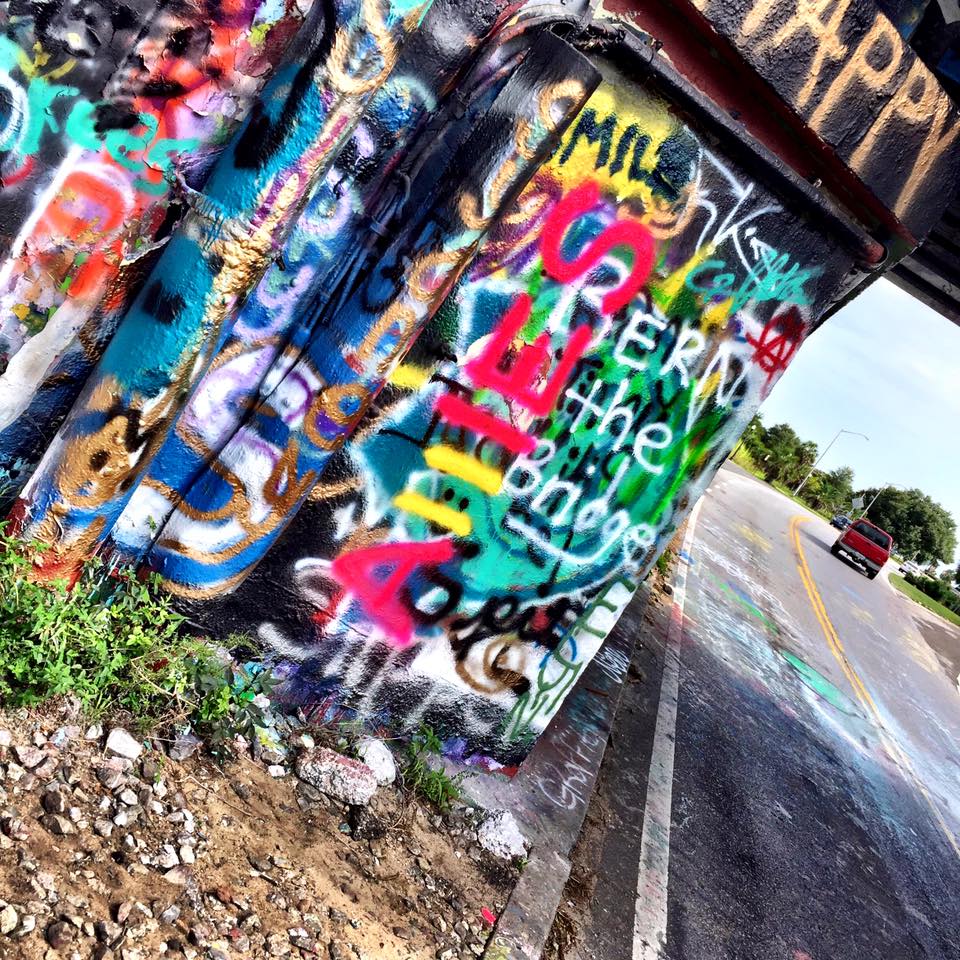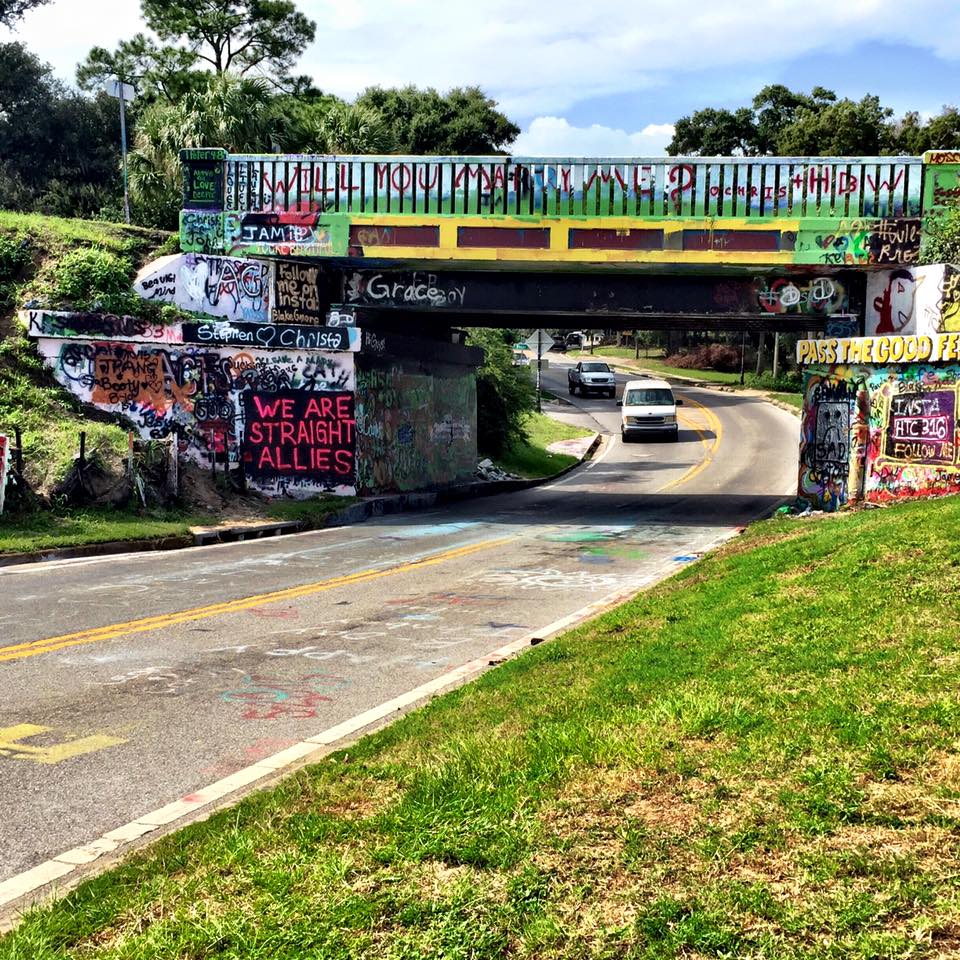Spray Paint, Racism and Homophobia Collide at Pensacola's Graffitti Bridge
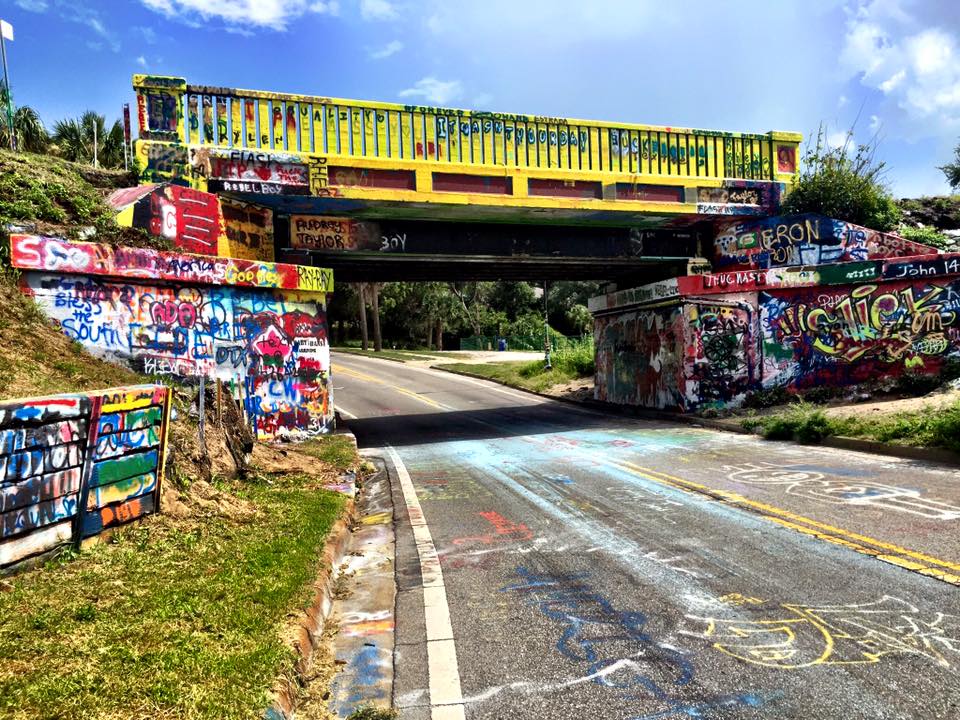
Blog By: Chevara Orrin, founder & co-creator of We Are Straight Allies.
Two months ago, I visited Pensacola for the first time as we began our We Are Straight Allies statewide expansion. No different than many communities throughout our nation, I found beautiful conscious humans grappling with the intersection of injustice and freedom: racism, homophobia, homelessness, the criminalization of poverty, and economic, education & healthcare disparity.
Breakfast at the Coffee Cup, a local gathering spot (kinda reminded me of "Mel's Diner) with Father Nathan Monk, Orthodox priest and homeless advocate who gave up his priesthood in the spirit of commitment to his beliefs about LGBT equality, was insightful and inspiring. He shared stories of his personal journey and work, recent tension and vitriol surrounding the Confederate flag and marriage equality, and hipped me to the Graffiti Bridge (more formally known as the 17th Avenue railroad trestle).
The bridge is a community canvas, a public discourse space with no real "rules." A place where art and expression collide with politics and whimsy. Artists paint daily, covering each other's work. From memorials to Mardi Gras, portraits of Jesus, and rainbow flags.
Midway through our conversation, we were interrupted by a late 30-something white woman. She apologized for intruding and then said, "It's obvious you people aren't from around here, but you could try a little Southern Hospitality! My child can hear your vulgar conversation!" She snatched her son by the arm and dragged him out of the restaurant while I wrapped my mind around the narrow and scary world she inhabits and picked my mouth up from the floor.
A moment longer and I would have told her that yes, I am a daughter of the South, raised on the banks of the Mighty Mississippi River, in a cotton town with the same putrid history as Pensacola.
I quickly asked Father Monk if I had dropped any "F" bombs. He laughed. Ohhhhh....right...the vulgarity of publicly discussing racism, homophobia, equality. Shit, now I was mad, too.
All was not lost. A lovely gay activist stopped by to chat and picked up our tab after Father Monk told him what I was doing in the Panhandle.
Of course, I couldn't wait to get to Graffiti Bridge. What greeted me was an American flag and "F*** Fags!" Father Monk shared that for the past two and a half weeks, a group of less than stellar human beings from a tiny town 45 miles away had come to paint a rebel flag on the bridge. Townspeople waited them out and repainted. Each day.
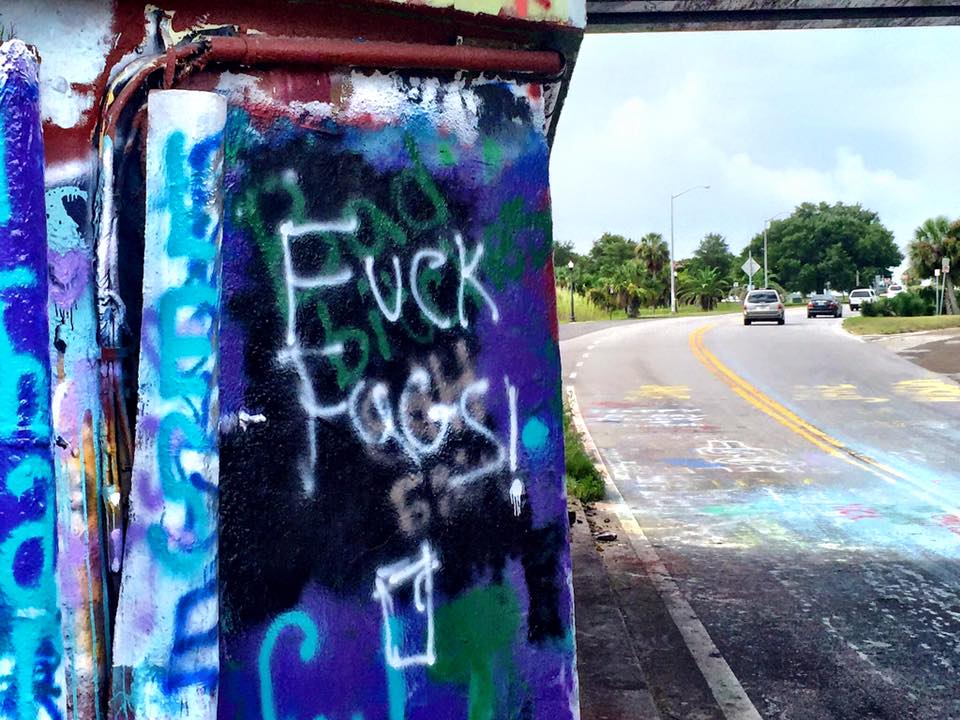
I walked around the bridge, taking photographs, stopping to read each line, trying to visualize the humans whose hearts were hardened with such hate. Teetering in six inch heels on rocks, broken glass and sand as cars whizzed by.
When I'd had enough artist expression, I made my way back to my car parked near the river bank. A family was preparing to sail. "DIXSEA" was her name. I stood in the sweltering sun and watched them until they were only a speck against the horizon. All the while, breathing deeply, filled with rage, sorrow, shame and exhaustion.
A few feet away, two deeply sunkissed wrinkled men sat on the bank. One looked up, "Hey pretty lady, I like your bright dress. You a reporter? "No sir, just passing through." "Ask her, Sam. She looks like she outta know." He pointed to the boat in the distance. "Ain't that 'sposed to be taken down? All them Confederate flags?"
This week, I journeyed back to the Panhandle and added our voice to Graffiti Bridge.
Thankful for ancestors who despite weary bodies, hearts and minds, kept it moving for my freedom.
